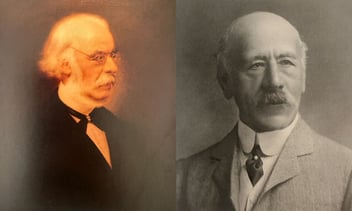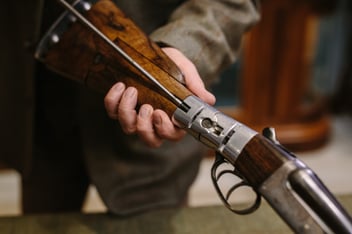Inside the Factory
By the latter part of the 1880’s the success of Holland & Holland was such that they were selling an average of 400 guns and rifles a year - probably the largest trade in sporting rifles in Britain. At this time, their premises was located at 98 New Bond Street but was too small to allow for the large scale manufacture that was becoming necessary.
At this point, Henry Holland made the decision to use profits from the business to invest in the building of a factory, thus revolutionising the brand from retailers into builders of guns on a much larger scale. It would also allow for greater quality control.
The first factory was located at 527 Harrow Road - a location chosen for its proximity to not only the shooting and testing ground at Kensal Rise but also nearby train stations. At the time, there was little building in this area so land was cheap and there was much open countryside. Construction began on this purpose built factory in 1892 by builders Holland & Hannen - an extraordinary coincidence but with no relation. By Spring of 1893 work was completed and the building drew universal admiration with its deliberately tall structure and multitude of windows to allow as much natural light as possible.

The Field published a detailed article of the factory on 27th May 1893, writing:
“In all upwards of 100 men are employed by Messrs Holland & Holland upon the highest clay of work alone; and in order to secure the intelligent services of the bets artificers, and to turn out work the the firm need not be ashamed of, everything that money can procure, or experience suggest, appears to be provided. This is the most perfect and complete factory we have yet seen in London”.
A Factory of such magnitude required a manager to oversee its creation, recruit the gunmakers and oversee the day to day running of production. The man appointed for this role was Thomas Woodward, born in 1855 in Birmingham. Thomas became an important part of Holland & Holland’s heritage for three reasons. Firstly, he had the enormous task of setting up the new factory with all that this entailed. Secondly he played a huge part in the transition of Holland & Holland from being primarily a retailer to a large scale gun manufacturer. Thirdly, he was responsible for a large number of patents around the turn of the century, listed as co-patentee of nineteen alongside Henry Holland, including important innovations such as the single trigger and detachable lock. In recognition of the regard in which he was held, Woodward was made a director of the firm in 1904 until he was forced to resign due to ill health in 1914.

The results of Henry Holland’s investment in the factory surpassed expectations and in the space of three or four years, demand increased rapidly, mainly due to to the newly introduced best quality guns and rifles. At this point, the factory either required significant enlargement or alternatively, a new factory needed to be built. Henry decided on the latter mainly thanks to a convenient piece of land becoming available only half a mile to the west along the Harrow Road.
The new factory was completed in the Spring of 1898 and 906 Harrow Road remains the factory to the present day. The new location was even more favourable, being closer to the Shooting Ground at Kensal Green. It also overlooked a cemetery which was ideal in that there was little chance of that land ever being developed, thus blocking the flood of light into the building.
No one is quite sure whether by sheer coincidence or design but Harris Holland had died on 2nd March 1896 just two years previous to the new factory being built and was buried in the 77 acres of cemetery that the factory overlooked. The Holland family tomb is clearly visible from the factory.

The building was purpose designed to be a gun factory with brick construction, five floors plus attic, and deliberately built tall and slim with large windows south facing for maximum light. The north side provided more stable light conditions and was ideal for engravers. The machine shop was located in the basement with all the heaviest machines as well as a boiler room. The ground floor housed the stocking shop and offices, first floor was the action shop, second floor barrel shop with engravers on the north side and the third and attic floors contained store rooms.
The total cost of the new factory stood at around £10,000 and in a bid to continue his policy of ‘enlightened employer’, Henry Holland added a large recreation room to the right of the factory which he reputedly paid for himself.
The factory remained more or less unchanged until a refurbishment in 1990 - 1991 costing around £1.5 million which was necessary in order to meet the increasing demands of the gun industry.
All Holland & Holland shotguns and rifles are still produced at this site today.





